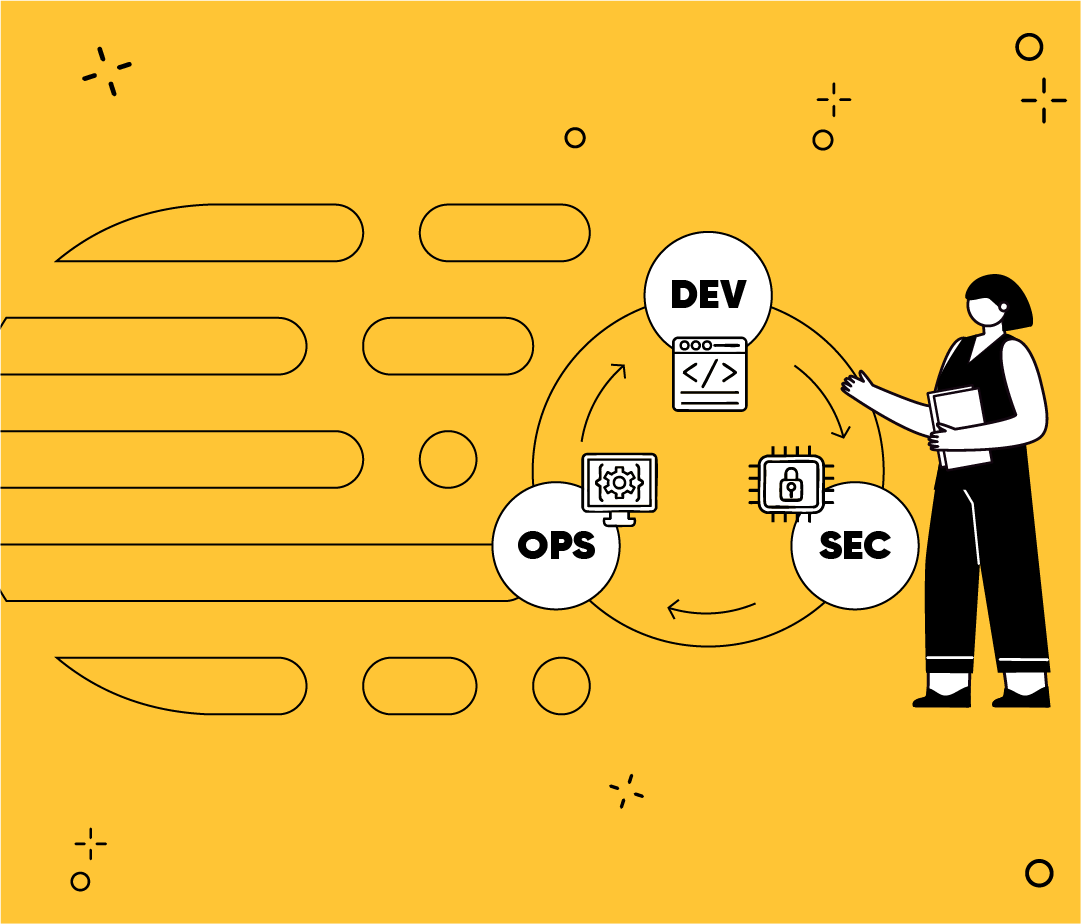DevSecOps has revolutionized how security is integrated into software development. In a constantly evolving tech landscape, companies must adopt best practices and more comprehensive approaches to manage their development processes—especially with the rise of cyber threats. Security has become one of the biggest challenges for organizations, as vulnerabilities can be exploited quickly if not effectively addressed.
Traditionally, security has been added at the end of the development lifecycle, resulting in a reactive approach and leaving vulnerabilities in place throughout much of the process. This approach was inefficient and costly. DevSecOps was born in response to the need to proactively improve security. Its goal is to ensure that security is a priority from the start and is integrated into every phase of development without sacrificing speed and agility.
In short, DevSecOps is a methodology that combines DevOps principles with a comprehensive approach to security. Rather than treating security as an isolated step at the end of the development cycle, DevSecOps seeks to integrate security into every phase: from planning, development, integration, deployment and maintenance. This methodology involves development, operations, and security teams working together continuously to ensure that applications are secure from creation to deployment.

How does DevSecOps work?
DevSecOps works by integrating security practices into the agile DevOps workflow. Teams collaborate continuously to address security risks proactively. This includes automating security testing, integrating real-time code analysis, and implementing security policies that are consistently enforced throughout the development lifecycle. As a result, teams can identify and resolve security issues without impacting the speed of delivery.
What is the difference between DevOps and DevSecOps?
Although DevOps and DevSecOps share a similar philosophy of collaboration between development and operations teams to improve efficiency in the software delivery process, the main difference lies in the integration of security. While DevOps focuses on continuous delivery and process automation without a specific focus on security, DevSecOps incorporates security from the beginning and makes it an essential component of the development lifecycle. In DevSecOps, security is not an add-on step, but a fundamental part that is integrated into every phase of the process.
Why is it important to adopt DevSecOps?
Implementing DevSecOps is critical to effectively mitigating security risks. By integrating security into every phase of development, vulnerabilities are identified and addressed early, reducing the costs associated with fixing bugs later. In addition, test automation and continuous monitoring enable rapid threat detection, improving software quality and reliability without impacting the speed of development. As a result, companies can ensure the security of their applications while maintaining agile delivery.
Suscribe to our newsletter!
Key benefits of this methodology
- Proactive security: Identify vulnerabilities before they become serious threats through automated security testing and integrated security policies.
- Increased agility: By integrating security into the development workflow, teams can move faster without sacrificing security, which is critical in a time-to-market environment.
- Improved collaboration: Fosters a culture of continuous collaboration between development, operations, and security teams, ensuring that everyone is working together to produce secure, high-quality software.
What are DevSecOps tools?
DevSecOps tools are key to integrating security into every phase of software development. These tools allow you to detect, manage, and mitigate vulnerabilities continuously. Here are some of the most common:
- Static code analysis (SAST): Tools such as SonarQube and Checkmarx help identify vulnerabilities in code before it is executed.
- Dynamic code analysis (DAST): OWASP ZAP and Burp Suite help identify application vulnerabilities.
- Infrastructure Automation (IaC): Terraform and Ansible enable secure infrastructure management as code.
- Security Monitoring: Qualys and Nessus detect vulnerabilities in real-time.
- CI/CD: Jenkins and GitLab integrate security testing into the development workflow.
- Container Security: Docker Security and Kubernetes Security protect container-based applications.
These tools ensure that security is an integral part of the development process, without compromising agility or speed.
Conclusion
In summary, DevSecOps creates a more secure and efficient environment through automation and continuous collaboration between development, operations, and security teams. By incorporating specialized tools at each stage, companies can proactively identify and resolve security issues, improve software reliability, and reduce the costs associated with fixing vulnerabilities at later stages.
This methodology integrates security into development, enabling organizations to build more secure, faster, and scalable applications. Adopting DevSecOps with the right tools can mean the difference between secure software and exposed vulnerabilities.

At Crombie, we apply security best practices from the start of the development process
We support our clients in building secure software by integrating continuous analysis tools and ongoing improvement processes. This helps prevent vulnerabilities, reduce risks, and meet security standards—without slowing down product evolution.













Leave a Comment